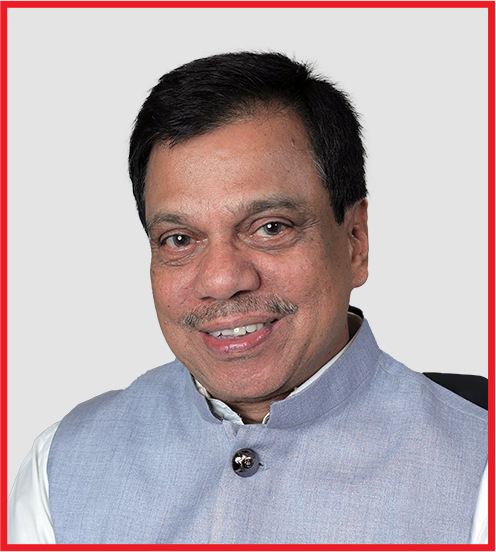Contents
- 1. Background
- 2. Scope of the Policy
- 3. Definitions
- 4. Timelines
- 5. Resolution Norms
- 6. Method of Calculations And Adjustment
- 7. Asset Classification And Provisioning
- 8. Complaint Redressal Process
- 9. Credit Information Company (CIC) Reporting
- 10. Disclosure Requirements
- 11. Other Points
- Annexure I
- Annexure II
- Annexure III
- Annexure IV
Policy on Resolution Framework 2.0, May 2021
1. Background
In the background of Covid-19 second wave in India, the States and Local Administrations started announcing lockdowns and the same slowed down the economic activities all over India. With the objective of alleviating the potential stress to individual borrowers, small businesses and MSME, on 5th May 2021 the measures to be taken by the financial entities including NBFCs are announced by RBI, through the Resolution framework 2.0.
To ensure the standard practice in the efforts, a Board Approved Policy to be framed, covering the possible measured planned to taken by the financial entities including NBFCs.
2. Scope of the Policy
This Policy will cover all the business portfolios of AMFL by providing tailor made solutions according to the nature of the business. The coverage of AMFL portfolios are provided below.
- The MFI & Gold Loan borrowers who are comes under the definition of “Personal Loan”, will be covered under this Policy, excluding staff loans. The credit facilities belong to the categories listed in sub-clauses (a) to (e) of the Clause 2 of the Annex to the Resolution Framework 1.0, and the Sl. No. 2 of FAQs on Resolution Framework for Covid-19 related stress (Revised on December 12, 2020) will be considered for exemption (Annex I).
- The borrower account classified as a micro, small or medium enterprise as on March 31, 2021 in terms of the Gazette Notification S.O. 2119 (E) dated June 26, 2020, having GST registration according to the applicability, and the aggregate exposure including non-fund based facilities, of all lending institutions to the borrower does not exceed ₹25 crore as on March 31, 2021, will be covered in the Policy. However, the Udyam Registration to be completed before the date of implementation of the restructuring.
- Individuals who have availed of loans and advances for business purposes and to whom the lending institutions have aggregate exposure of not more than Rs.25 crore as on March 31, 2021, will be covered.
- Small businesses, including those engaged in retail and wholesale trade, other than those classified as micro, small and medium enterprises as on March 31, 2021, and to whom the lending institutions have aggregate exposure of not more than Rs.25 crore as on March 31, 2021, will be covered.
In all cases the borrower account shall be in standard position as on 31st March 2021.
Additional points to be noted
- If the borrower account comes under point no 2(a, c, d) and availed any resolution in terms of the Resolution Framework – 1.0, will be eligible for resolution frame work 2.0 (excluding the additional finance facility) subject to the overall cap on extension of residual tenor, inclusive of moratorium period if any permitted, shall be two years.
- If the borrower account comes under point no 2(b) and the borrower’s account was restructured in terms of the circulars DOR.No.BP.BC/4/21.04.048/2020-21 dated August 6, 2020; DOR.No.BP.BC.34/21.04.048/2019-20 dated February 11, 2020; or DBR.No.BP.BC.18/21.04.048/2018-19 dated January 1, 2019 (collectively referred to as MSME restructuring circulars) will not be eligible for any resolution under the Framework 2.0.
- However, to support the borrowers as mentioned in the point no 2(c & d), who already availed the resolution under Framework 1.0 and needs working capital support, the lending institutions are permitted, as a one-time measure, to review the working capital sanctioned limits and / or drawing power based on a reassessment of the working capital cycle, reduction of margins, etc. without the same being treated as restructuring. The decision with regard to above shall be taken by lending institutions by September 30, 2021, with the margins and working capital limits being restored to the levels as per the resolution plan implemented under Resolution Framework – 1.0, by March 31, 2022.
- To support the borrowers who already availed the resolution as mentioned in the point no (b) above, lending institutions are permitted, as a one-time measure, to review the working capital sanctioned limits and / or drawing power based on a reassessment of the working capital cycle, reduction of margins, etc. without the same being treated as restructuring. The decision with regard to above shall be taken by lending institutions by September 30, 2021. The reassessed sanctioned limit / drawing power shall be subject to review by the lending institution at least on a half yearly basis and the renewal / reassessment at least on an annual basis. The annual renewal/reassessment shall be expected to suitably modulate the limits as per the then-prevailing business conditions.
3. Definitions
Personal Loan
“Personal Loan”, having the same meaning as provided in the Circular DBR.No.BP.BC.99/08.13.100/2017-18 dated January 4, 2018 on “XBRL Returns – Harmonization of Banking Statistics” (Annex II).
MSME
The borrower should be classified as a micro, small or medium enterprise as on March 31, 2021 in terms of the Gazette Notification S.O. 2119 (E) dated June 26, 2020 (Annex III).
Invocation
“Invocation”, the resolution process under this window shall be treated as invoked when the lending institution and the borrower agree to proceed with the efforts towards finalising a resolution plan to be implemented in respect of such borrower.
Circumstances which may be treated as implemented.
The resolution plan shall be deemed to be implemented, if all the below mentioned conditions are satisfied.
- All related documentation, including execution of necessary agreements between lending institutions and borrower and collaterals provided, if any, are completed by the lenders concerned in consonance with the resolution plan being implemented;
- The changes in the terms of conditions of the loans get duly reflected in the books of the lending institutions; and,
- Borrower is not in default with the lending institution as per the revised terms.
4. Timelines
- The decision on the application for invoking resolution process shall be communicated in writing to the applicant by the lending institutions within 30 days of receipt of such applications.
- In all cases, the resolution frame work to be invoked on or before September 30, 2021.
- The resolution plan should be finalised and implemented within 90 days from the date of invocation of the resolution process.
5. Resolution Norms
To support the customers, during the second wave AMFL will take all the possible efforts through the below mentioned resolutions.
MFI:-
- The borrowers, whose livelihood is not yet affected in the Covid-19 Second wave, can continue to pay the normal EMI amount. And in situations of stress they can approach for resolutions under this window on or before 1st September 2021. The timeline will be extended up to 30th September 2021, on special circumstances based on the confirmation on request from business team.
- The borrowers whose livelihood are partly affected in Covid-19 second wave, can pay part of their applicable EMI. The minimum amount to be paid will be the interest accrued during the part payment days. The amount paid over and above the accrued interest will be adjusted to principle outstanding. Based on the payment structure, the tenure of the loan will get extended according to the interest calculations on diminishing balance method. The slab for repayment above accrued interest will be finalised by business team according to the easiness of collection and accounting.
- The borrowers whose livelihoods are fully affected in Covid-19 second wave, can stop paying their EMIs, to a maximum period of 30th September 2021. The same will be treated as paid Moratorium at simple interest rate. There after the payments to be regularised, the tenure of the loan will get extended according to the interest calculations on diminishing balance method.
- In situations where it is understood that an additional finance support is required for revamping the livelihood of the borrower the same may be granted.
- In situations, where ambiguities remains about the financial positions of the borrower during the month September 2021, the resolutions mentioned above in the point no i,ii, and iii can be extended further. The overall cap on extension of residual tenor, inclusive of moratorium period if any permitted, shall be two years. Based on the recommendations from business team the management may take decisions in this regard.
- The interest accrued during the period will not be capitalised, while restarting the repayment the amount will be initially adjusted to outstanding interest accrued portion and thereafter to principal portion.
The borrowers who are ready pay the amount can also use the Digipay application available in the Play Store, to ensure the social distancing.
MSME:-
- Customers whose business has been impacted by the second wave of Covid-19 will be offered a revised repayment schedule and the loan tenure shall be extended by a maximum of 12 months subject to the extended tenor not extending beyond the originally sanctioned tenor.
- The accrued interest along with the applicable overdue interest if any shall be capitalised at the existing rate of interest
- The facility of the revised EMI amount offered to customers would be subject to the assessment of revised Cash Flow.
The mentioned resolutions will be finalised based on the Cash Flow assessment and the personal discussions with the borrower.
In situations, where the customer failed to comply with the MSME eligibility criteria mentioned in point no 2 (b), then the eligibility under the point no 2 (c) and 2(d) will be verified. The borrowers who are eligible under the points 2 (c) & (d) will be resolved with same solutions made for MSME business (mentioned above). However, the provisioning norms and other terms will be same as applicable to the Individuals and Small Businesses.
All other parameters including Approval Authority as per existing MSME Credit Policy shall be applicable.
Gold Loan:-
Since the Gold Loan does not have any fixed repayment commitments in terms of EMI, the nature of repayment and the existing terms and conditions applicable for repayment will reduce the scope for additional resolution. However, on payment of due interest the customer can renew the loan to the next tenure, subject to the value of underlying gold.
The terms and conditions mentioned in the loan documents will be applicable, unless specific direction in this regard is issued by the competent authorities.
6. Method of Calculations And Adjustment
If customer (MFI & MSME) had made last payment on 25th April, 2021 and restarted the payment by 30th June, 2021. The moratorium interest will be calculated from 25th April to 30th June for 66 days and the amount so collected will be adjusted initially against the moratorium interest and the balance will be adjusted against principal portion.
If the EMI payable according to the original/revised schedule is of Rs.1500/- consisting Rs.500/- as interest and Rs.1000/- as principal, and if the moratorium interest so calculated according to the applicable conditions for 66 Days is Rs.900 /-. Then total amount eligible to adjust against the principal will be only Rs.600/- (1500-900).
In case of Gold Loan, there will be no EMI structure, and can start repayment at any desired amount. The amount so calculated will be initially adjusted against the pending interest mentioned in the above example and thereafter to principal amount.
7. Asset Classification And Provisioning
The important conditions to be noted during the classification of asset and provisioning are provided below.
- The borrower accounts other than MSME, classified as Standard may be retained as such upon implementation, whereas the borrowers’ accounts which may have slipped into NPA between invocation and implementation may be upgraded as Standard, as on the date of implementation of the resolution plan. The subsequent asset classification for such exposures will be governed by the criteria laid out in the Master Circular – Prudential norms on Income Recognition, Asset Classification and Provisioning pertaining to Advances dated July 1, 2015 or other relevant instructions as applicable to specific category of lending institutions (“extant IRAC norms”).
- The additional finance granted before implementation of the plan in order to meet the interim liquidity requirements of the borrower, may be classified as ‘Standard’ till implementation of the plan regardless of the actual performance of the borrower in the interim. However, if the resolution plan is not implemented within the stipulated timelines, the asset classification of the additional finance sanctioned will be as per the actual performance of the borrower.
- The classifications and provisioning of the borrowers who have availed both the resolution framework 1.0 and 2.0 shall be continued according the norms applicable to the framework 1.0.
- Asset classification of MSME borrowers classified as standard may be retained as such, whereas the accounts which may have slipped into NPA category between April 1, 2021 and date of implementation may be upgraded as ‘standard asset’, as on the date of implementation of the restructuring plan.
- With regard to the borrower accounts other than MSME, the provisions shall keep from the date of implementation, which are higher of the provisions held as per the extant IRAC norms immediately before implementation, or 10 percent of the renegotiated debt exposure of the lending institution post implementation (residual debt).
- With regard to the borrower accounts which are comes under the definition of “personal Loans”, the half of the above provisions may be written back upon the borrower paying at least 20 per cent of the residual debt without slipping into NPA post implementation of the plan, and the remaining half may be written back upon the borrower paying another 10 per cent of the residual debt without slipping into NPA subsequently.
- In respect of exposures mentioned in the point no 2 (c & d), the above provisions shall not be written back before one year from the commencement of the first payment of interest or principal.
- With regard to the MSME customers, upon implementation of the restructuring plan, the lending institutions shall keep provision of 10 percent of the residual debt of the borrower.
8. Complaint Redressal Process
To raise the complaints related to the Resolution Framework 2.0, the borrowers can contact the Grievance Redressal management on Toll Free No. 1800 270 1146 or by Post at Asirvad Micro Finance Ltd. CIN- U65923TN2007PLC064550 9th and 10th Floor, no 9, Club House Road, Anna Salai, CHENNAI 600002 or by email to grievances@asirvad.in giving the full details of resolution applied loan and the address of the Branch. The complaints so received shall be resolved within 7 days from the date of receipt of the complaint.
9. Credit Information Company (CIC) Reporting
The credit reporting in respect of borrowers where the resolution plan is implemented shall reflect the “restructured due to COVID-19” status of the account.
10. Disclosure Requirements
While publishing quarterly financial statements, at the minimum, make disclosures as per the format prescribed (Annex- IV) in the financial statements for the quarters ending September 30, 2021 and December 31, 2021. The resolution plans implemented in terms of Individual Loans and Small Business Loans should also be included in the continuous disclosures required as per Format-B (Annex- IV) prescribed in the Resolution Framework – 1.0.
In situations where Resolution Framework 2.0 considers the customers who were availed resolution Framework 1.0 as mentioned in this Policy, the aggregate exposure to such borrowers may also be disclosed on a quarterly basis, starting from the quarter ending June 30, 2021.
Lending institutions that are required to publish only annual financial statements shall make the required disclosures in their annual financial statements, along with other prescribed disclosures.
11. Other Points
In all situations (MFI, MSME, Gold Loan) the waiver of amount so calculated according to the applicable resolutions will be decided by the Management based on the recommendations from business team along with the suitable justifications and supporting documents.
The resolutions are framed based on the experience gained in Covid-19 first wave and according to the current market situations and regulatory guidelines. If there is any further changes in the conditions, based on the further review, the additional resolutions will be added and will be submitted before Board for approval.
All other instructions specified in the MSME circular DOR.No.BP.BC/4/21.04.048/2020-21 dated August 6, 2020 shall remain applicable.
Any resolution plan (excluding MSME) implemented in breach of the stipulations of this circular shall be fully governed by the Prudential Framework for Resolution of Stressed Assets issued on June 7, 2019 (“Prudential Framework”), or the relevant instructions as applicable to specific category of lending institutions where the Prudential Framework is not applicable.
Annexure I
Exemptions as per Resolution Framework – 2.0: Resolution of Covid-19 related stress of Individuals and Small Businesses
- MSME borrowers whose aggregate exposure to lending institutions collectively, is 25 crore or less as on March 1, 2020.
- Farm credit as listed in Paragraph 6.1 of Master Direction FIDD.CO.Plan.1/04.09.01/2016-17 dated July 7, 2016 (as updated) or other relevant instructions as applicable to specific category of lending institutions.
- Loans to Primary Agricultural Credit Societies (PACS), Farmers’ Service Societies (FSS) and Large-sized Adivasi Multi- Purpose Societies (LAMPS) for on-lending to agriculture.
- Exposures of lending institutions to financial service providers
- Exposures of lending institutions to Central and State Governments; Local Government bodies (eg. Municipal Corporations); and, body corporates established by an Act of Parliament or State Legislature
Sl. No. 2 of FAQs on Resolution Framework for Covid-19 related stress (Revised on December 12, 2020)
Are all the farm credit as listed in Paragraph 6.1 of Master Direction FIDD.CO.Plan.1/04.09.01/2016-17 dated July 7, 2016 (as updated) ineligible under the Resolution Framework? Are the JLG loans provided to farmer households by MFIs are eligible for resolution plan under the Resolution Framework?
Ans) All the farm credit exposures of all lending institutions, including NBFCs, of the nature listed in Paragraph 6.1 of Master Direction FIDD.CO.Plan.1/04.09.01/2016-17 dated July 7, 2016 (as updated), except for loans to allied activities, viz., dairy, fishery, animal husbandry, poultry, bee-keeping and sericulture are excluded from the scope of the Resolution Framework. Subject to the above, loans given to farmer households would be eligible for resolution under the Resolution Framework if they do not meet any other conditions for exclusions listed in the Resolution Framework.
Definition of Farm Credit
| Farm credit | A. Loans to individual farmers [including Self Help Groups (SHGs) or Joint Liability Groups (JLGs), i.e. groups of individual farmers, provided banks maintain disaggregated data of such loans] and Proprietorship firms of farmers, directly engaged in Agriculture and Allied Activities, viz., dairy, fishery, animal husbandry, poultry, bee-keeping and sericulture. This will include: (i) Crop loans to farmers, which will include traditional/non-traditional plantations and horticulture, and, loans for allied activities. (ii) Medium and long-term loans to farmers for agriculture and allied activities (e.g. purchase of agricultural implements and machinery, loans for irrigation and other developmental activities undertaken in the farm, and developmental loans for allied activities.) (iii) Loans to farmers for pre and post-harvest activities, viz., spraying, weeding, harvesting, sorting, grading and transporting of their own farm produce. (iv) Loans to farmers up to ₹50 lakh against pledge/hypothecation of agricultural produce (including warehouse receipts) for a period not exceeding 12 months. (v) Loans to distressed farmers indebted to non-institutional lenders. (vi) Loans to farmers under the Kisan Credit Card Scheme. (vii) Loans to small and marginal farmers for purchase of land for agricultural purposes. B. Loans to corporate farmers, farmers’ producer organizations/companies of individual farmers, partnership firms and co-operatives of farmers directly engaged in Agriculture and Allied Activities, viz. diary, fishery, animal husbandry, poultry, bee-keeping and sericulture up to an aggregate limit of ₹2 crore per borrower. This will include:(i) Crop loans to farmers which will include traditional/non-traditional plantations and horticulture, and, loans for allied activities.(ii) Medium and long-term loans to farmers for agriculture and allied activities (e.g. purchase of agricultural implements and machinery, loans for irrigation and other developmental activities undertaken in the farm, and developmental loans for allied activities.)(iii) Loans to farmers for pre and post-harvest activities, viz., spraying, weeding, harvesting, sorting, grading and transporting of their own farm produce.(iv) Loans up to ₹50 lakh against pledge/hypothecation of agricultural produce (including warehouse receipts) for a period not exceeding 12 months. |
Annexure II
Definition of Personal Loan
| Srl. | Data Element | Harmonised Definition |
| 1 | Personal loans | Personal loans refers to loans given to individuals and consist of (a) consumer credit, (b) education loan, (c) loans given for creation/ enhancement of immovable assets (e.g., housing, etc.), and (d) loans given for investment in financial assets (shares, debentures, etc.). |
| 2 | Consumer Credit | Consumer credit refers to the loans given to individuals, which consists of (a) loans for consumer durables, (b) credit card receivables, (c) auto loans (other than loans for commercial use), (d) personal loans secured by gold, gold jewellery, immovable property, fixed deposits (including FCNR(B)), shares and bonds, etc., (other than for business / commercial purposes), (e) personal loans to professionals (excluding loans for business purposes), and (f) loans given for other consumptions purposes (e.g., social ceremonies, etc.). However, it excludes (a) education loans, (b) loans given for creation/ enhancement of immovable assets (e.g., housing, etc.), (c) loans given for investment in financial assets (shares, debentures, etc.), and (d) consumption loans given to farmers under KCC. For risk weighting purposes under the Capital Adequacy Framework, the extant regulatory guidelines will be applicable. |
Annexure III
Classification of MSME
Classification of enterprises.-An enterprise shall be classified as a micro, small or medium enterprise on the basis of the following criteria, namely:–
- A micro enterprise, where the investment in plant and machinery or equipment does not exceed one crore rupees and turnover does not exceed five crore rupees;
- A small enterprise, where the investment in plant and machinery or equipment does not exceed ten crore rupees and turnover does not exceed fifty crore rupees; and
- A medium enterprise, where the investment in plant and machinery or equipment does not exceed fifty crore rupees and turnover does not exceed two hundred and fifty crore rupees.
Becoming a micro, small or medium enterprise.–
- Any person who intends to establish a micro, small or medium enterprise may file Udyam Registration online in the Udyam Registration portal, based on self-declaration with no requirement to upload documents, papers, certificates or proof.
- On registration, an enterprise (referred to as ―Udyam in the Udyam Registration portal) will be assigned a permanent identity number to be known as ―Udyam Registration Number.
- An e-certificate, namely, ―Udyam Registration Certificate shall be issued on completion of the registration process.
Annexure IV
Format for disclosures to be made in the quarters ending September 30 and December 31, 2021
| Sl. No | Description | Individual Borrowers – Personal Loans | Individual Borrowers – Business Loans | Small Businesses |
| A | Number of requests received for invoking resolution process under Part A | |||
| B | Number of accounts where resolution plan has been implemented under this window | |||
| C | Exposure to accounts mentioned at (B) before implementation of the plan | |||
| D | Of (C), aggregate amount of debt that was converted into other securities | |||
| E | Additional funding sanctioned, if any, including between invocation of the plan and implementation | |||
| F | Increase in provisions on account of the implementation of the resolution plan |
Format-B
| Type of borrower | Exposure to accounts classified as Standard consequent to implementation of resolution plan – Position as at the end of the previous half-year (A) | Of (A), aggregate debt that slipped into NPA during the half-year | Of (A) amount written off during the half-year | Of (A) amount paid by the borrowers during the half-year | Exposure to accounts classified as Standard consequent to implementation of resolution plan – Position as at the end of this half-year |
| Personal Loans | |||||
| Corporate persons* | |||||
| Of which MSMEs | |||||
| Others | |||||
| Total | |||||
| * As defined in Section 3(7) of the Insolvency and Bankruptcy Code, 2016 |
































